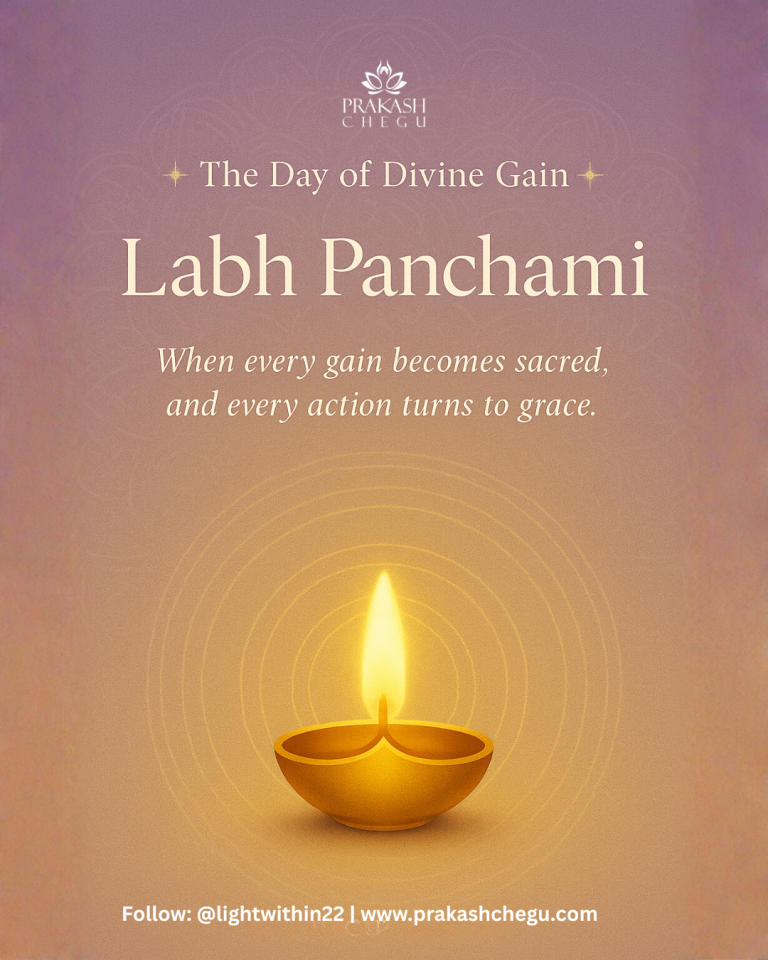Aja Ekadashi (अजा एकादशी) is one of the most transformative observances in the Hindu lunar calendar. Falling on the Krishna Paksha Ekadashi—the 11th day of the waning moon—in the month of Bhadrapada (Aug–Sept, lunar-dependent), it is kept with devotion and fasting by Vaishnavas and seekers of all paths who revere Lord Vishnu. Tradition holds that Aja Ekadashi has a unique power to clear past karmas, lift ancestral burdens, and orient the mind toward liberation (moksha).
What “Aja” Means
- Aja means “unborn” or “imperishable”—a divine epithet of Lord Vishnu (and, in some contexts, Shiva). It points to the eternal, formless consciousness that never begins and never ends.
- In another interpretive stream, Aja also alludes to the karmic residues that keep the soul bound. Observing this Ekadashi is said to loosen and release those bindings.
- Together, these meanings reveal Aja Ekadashi as a doorway from bondage to moksha.
Scriptural Roots
The glories of Aja Ekadashi are described in the Padma Purana and Brahmavaivarta Purana. In a classic dialogue, Yudhishthira asks Lord Krishna about its significance, and the Lord responds with a teaching story to show how powerful this vrata (vow) can be in dissolving karmic entanglements.
The Legend of King Harishchandra
King Harishchandra, famed for unwavering truth (satya-dharma), was tested by Sage Vishwamitra and lost everything—kingdom, wealth, even family—reducing him to the keeper of a cremation ground. Despite unimaginable hardship, he never abandoned truth.
Advised to keep Aja Ekadashi vrat, he fasted and worshiped Lord Vishnu with single-pointed devotion. By the merit of this observance, his karmic debts were dissolved; he was reunited with his family, regained his kingdom, and ultimately moved toward liberation. The lesson is timeless: even heavy karma can be transformed through sincere practice.
How to Observe Aja Ekadashi
The Day Before (Dashami)
- Eat a simple, sattvic meal before sunset.
- Avoid onion, garlic, grains, lentils, beans, meat, eggs, alcohol, and heavy foods.
- Prepare your altar (image of Vishnu, Tulsi leaves if available, lamp, incense, water, flowers, fruit).
- Set a clear sankalpa (intention) for purification and devotion.
On Aja Ekadashi (The Day of the Fast)
Choose your fasting level:
- Nirjala: No food and no water (advanced; not recommended for those with health considerations).
- Partial fast (phalahar): Fruits, milk, nuts, water, herbal tea.
- Ekabhukta (one light meal): Non-grain, sattvic food (e.g., sabudana, sama/barnyard millet, potatoes, sweet potatoes, peanuts) with rock salt (sendha namak).
Worship & Practice:
- Wake before sunrise, bathe, and perform Vishnu puja with flowers, incense, lamp, and offerings.
- Chant “Om Namo Bhagavate Vāsudevāya”, the Hare Krishna Mahamantra, or recite the Vishnu Sahasranama.
- Read or listen to the Aja Ekadashi Vrat Katha (the Harishchandra story).
- Offer charity—food, clothes, or donation to those in need or to a temple.
On Dwadashi (Next Day) — Breaking the Fast (Parana)
- Break the fast after sunrise and within the specified parana window (check your local panchang), ideally after Hari-Vasara (the first quarter of Dwadashi) has ended.
- Offer food to Lord Vishnu and accept prasadam. Traditionally, grains are reintroduced at parana to formally close the Ekadashi. If medically unsuitable, you may symbolically offer/touch grains and then eat a gentle sattvic meal.
Spiritual Significance
- Karmic cleansing: Said to absolve sins from this and previous births.
- Gateway to moksha: Turns the heart and mind toward the deathless.
- Ancestral relief: Blessings are believed to flow to the lineage, easing ancestral burdens.
- Fulfillment through alignment: With faith and consistency, the vrata supports peace, clarity, and prosperity.
Astrological & Energetic Lens
Aja Ekadashi arises during the waning moon of Bhadrapada—an inherently inward, releasing phase. Its field favors:
- Letting go of subconscious impressions (samskaras).
- Deep meditation, mantra, and inner silence (mauna).
- Subtle yogic work that refines awareness without overstraining the body.
Mantras & Practices (Choose One or Combine)
- Vishnu Sahasranama Stotra
- Hare Krishna Mahamantra
- Om Namo Bhagavate Vāsudevaya
- Silent meditation and a chapter from the Bhagavad Gita (Ch. 12 or 18 are classic choices)
Practical Notes & Care
- The merit of Ekadashi lies in bhava—your heartfelt intention—not in extremity.
- If you are pregnant, nursing, on medication, elderly, or unwell, choose a gentle fast and focus on puja, japa, seva, and sattvic conduct.
- Keep the day quiet, truthful, and simple. Avoid arguments, stimulants, and overexertion.
- For teachers or those working, sustain energy with fruit, coconut water, and light sattvic options (if not nirjala).
A Simple Sankalpa You Can Use
“On Aja Ekadashi of Krishna Paksha in Bhadrapada, I, [Name], vow to observe this vrat for the purification of past karmas, the upliftment of my ancestors, and devotion to Lord Vishnu. May this observance be successful and pleasing to the Lord.”
Summary
Aja Ekadashi is a sacred observance dedicated to Lord Vishnu that combines fasting, prayer, and charity to erase karmic residues, bless the lineage, and orient the soul toward freedom. Gentle or rigorous, your observance matters most when it is sincere, sattvic, and steady. Keep the vow, keep the heart soft, and let the unborn grace of Aja do its quiet work within you.






